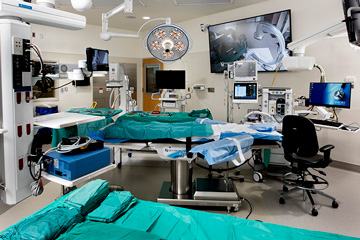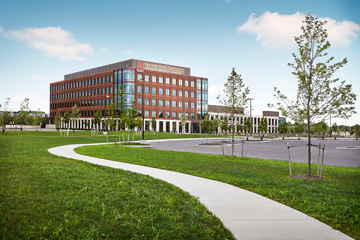The facility was designed as a destination spot for state-of-the-art care.
 CREDIT: Emory Healthcare
CREDIT: Emory HealthcareROOM FOR GROWTH Emory Musculoskeletal Institute's outpatient ORs are outfitted with the latest technologies surgeons use to perform complex cases.
The new Emory Musculoskeletal Institute in Brookhaven, Ga., brings a host of surgical services to a single location, giving patients convenient access to comprehensive orthopedic and spine care. An ultramodern ambulatory surgery center, imaging facility, and physical therapy and rehab spaces form the institute's core, but a wide range of extra features were built with accessibility and interconnectivity in mind.
Patients park for free in an attached parking garage with close to 800 spaces. Inside the institute, they can access an interactive website that provides details about available care programs and even guides them through a digital tour of the artwork that hangs throughout the building. Large flat-screen monitors in each exam room display background information about the physicians with whom patients meet and diagrams of surgical procedures based on the care plans of individual patients.
The facility was designed with eco-friendly features that include strategic lighting that limits light pollution, water management solutions that capture and contain 95% of stormwater runoff, automatic tinting glass on the sunny side of the building that helps to control temperatures and reduce energy consumption needed to cool the interior, and monitors that automatically increase fresh air flow where staff and patients are gathered.
"The new building will assist in attracting and retaining the best faculty, staff, trainees and researchers, while serving patients for both routine and complex orthopedic treatment and care," says Jonathan S. Lewin, MD, CEO of Emory Healthcare and executive vice president for health affairs for Emory University. "We expect the Emory Musculoskeletal Institute to be a destination musculoskeletal facility."
.svg?sfvrsn=be606e78_3)



.svg?sfvrsn=56b2f850_5)